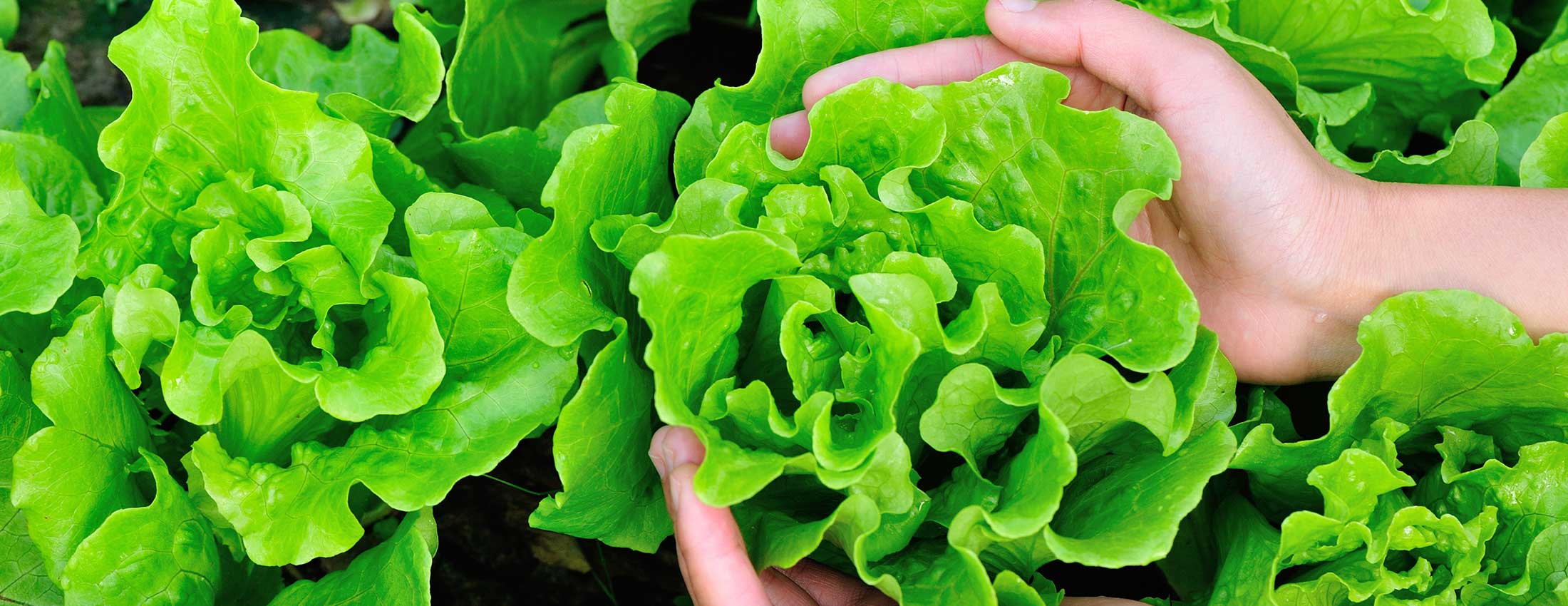The Beauty of Brix – Ten Things You Need To Know

Imagine a hardy, inexpensive, user-friendly tool that will predict your crop's pest pressure, yield potential, quality, shelf-life, calcium status and weed problems. It will even detect boron deficiency, foliar spray suitability and the likelihood of frost damage. It seems a big ask for a single device, but the refractometer offers all of this and more for less than $100 AUD!
The ability to monitor your progress is integral to the Nutrition Farming® approach. When you can clearly track benefits, you are inspired to continue on the sustainable path. There is method to the madness and doubts dissipate. Here are the ten things you need to know about the refractometer.
Ten Brix Tips
-
You are measuring the light refracting through the dissolved solids on the screen of this sawn-off little telescope. You are literally measuring nutrient density or, more accurately, your skills as a chlorophyll manager. In fact, you are monitoring your growing skills! There have been many crestfallen faces when the deep green grape leaf delivers a brix reading of 2, instead of the required 12 degrees brix.
-
It looks like you are looking at a fuel gauge and in a way you are. A low brix reading is akin to a plant fresh out of fuel. The line that divides the two visible hemispheres can also offer an indication of calcium levels in the plant. If the dividing line is clean and sharp, this indicates a calcium deficiency. It can actually be a sign of generalised mineral deficiency, but as calcium is "the trucker of all minerals", this mineral is the chief suspect. The goal of all good growers is to fuzz up that sharp line. A fuzzy dividing line is an indication of mineral density and desirable calcium levels in the plant.
-
Low brix levels are often linked to high nitrate levels in the plant. It is impossible to achieve nutrient density in the presence of excessive nitrate nitrogen. This form of N is only ever uptaken with water, so the higher the nitrate levels the greater the dilution factor. A watery, mineral deficient plant is a calling card for insects and disease, so this could also be called a stress meter. In effect, your likelihood of anxiety is all locked within this ten second measurement. The higher your brix levels, the greater your farming fun.
-
High brix plants will have a higher specific gravity. They will weigh more and, if you are paid by weight, this is a good story. The only time it is not positive is if you sell your hay by the bale. You will be getting the same money for much heavier bales. On the plus side, your customers will come back for more of your nutrient-dense, superior quality fodder.
-
Shelf-life and brix are directly related. It amazes me that the large supermarkets have not cottoned on to this fact. The higher the brix levels of fresh produce, the longer it will last on the shelves and the associated waste factor can be significantly reduced. If supermarkets demanded higher brix produce and even paid a premium for this quality, they would flood their floors with shoppers seeking forgotten flavours and enhanced medicinal qualities in their food. The success of the "Farming for the Future" initiative by Woolworths in South Africa is acute evidence of this unrealised potential.
-
How important is this magical substance called humus? Not only does it positively impact soil structure, gas exchange, water retention, mineral delivery and plant resilience, it also determines how quickly a lack of sunshine will crash a good season. If your soil contained 2% organic matter and your neighbour's soil featured 4% organic matter, and you were both impacted by a prolonged period of cloudy weather, here's what will happen. After about two days of cloud, your brix levels will begin to fall and pest pressure will begin to increase. By contrast, your neighbour's crop will not decline. It may be as long as a full week before his crop begins to suffer from a lack of photosynthesis. This phenomenon is partially linked to the fact that humus contains fulvic acid, a natural substance that seems to substitute for a lack of sunlight. In fact, fulvic acid is often called, "the second sun", in relation to this factor.
-
Good brix levels can confer enhanced protection against frost. Kelp is often used for this purpose, as it is a primary brix-building tool. Studies in Tasmania, several years ago, revealed that kelp applications before frost events could provide up to 3°C of frost protection. Of course, the most dramatic frost protection strategy involves removing the root cause of the problem. Frost crystals are created by a group of organisms called ice-nucleating bacteria. If you can remove these creatures from the leaf surface, you can minimise frost damage. Thankfully, there is a solution. Nutri-Life Sudo-Shield™ from NTS features massive numbers of a leaf-dwelling organism called Pseudomonas fluorescens. When applied to the leaf, this organism will improve the leaf population of non-ice-nucleating bacteria and subsequently decrease the likelihood of frost damage; these organisms can continue that invaluable service for around 4 weeks. We have had tremendous feedback from growers around the world who have escaped the frost damage that has decimated their neighbours, following a foliar application of Nutri-Life Sudo-Shield™.
-
An appropriate foliar formulation will rapidly lift brix levels in your crop. This understanding can serve to help determine the most suitable foliar spray at any given time. Here's how you can make this work for you. You have a field of wheat and you know that it could be performing better. Something is missing and you can only guess what that missing link might be. Your guesses can be far more informed if you do the following. Using a hula hoop to represent one square metre, you can field test your theories. One m2 is one 10,000th of a hectare. If you were intending to use 5 L per hectare of a liquid fertiliser, for example, that is 5000 mL per hectare or 0.5 mL per m2. In this instance you would simply add that amount of the fertiliser to a little water, in a 500 mL spray bottle, and apply that to the area enclosed by the hula hoop. You might use a similar process to deduce a suitable rate for other likely candidates on the trial area. You might, for example, field test four possibilities in this fashion. Leave the treated areas for 60 minutes and then re-test the respective brix levels of the crops within the four hula hoops. The formulation that delivers the best brix level increase within the allotted 60 minutes is the formula that will deliver the best response on your crop. There may even be formulations in your field trials that will actually drop brix levels within that time frame. You will be thankful that you did not select these inputs to improve crop nutrition. This technique offers immediate feedback to determine the most productive input at any given time and it can be a productive yield-building strategy.
-
Brix levels can also offer a warning of damaging storm events. Typically, the plant builds brix levels with photosynthesis throughout the day. At around 5 pm this process stops and, soon after, the plant begins to pump sugars down to the roots and the beneficial organisms surrounding those roots. Brix levels will always be higher in the late afternoon than in the morning, for this reason. If you notice a sudden drop in brix levels outside of those times, it may be a warning of an impending storm. It turns out that plants have a barometer-like capability that enables them to forecast a sudden change. If the brix level plummets at midday you might choose to batten down the hatches because trouble is brewing. Brix levels should never fall during the day and, if they do, it may be linked to a survival strategy. The plant "knows" that a hail storm may strip all of its leaves, so it pumps down as much sugar as possible to the roots, as an energy reserve to fund the rebuilding process. Unfortunately, this understanding is of little solace to the grower who is about to lose a season's investment. There is usually not much we can do about a hail storm.
-
Finally, the refractometer can also provide an indication of boron levels in your crop. If the brix levels of your crop do not drop overnight, then you may have uncovered a serious boron deficiency. Early each evening, a trapdoor opens, which allows the transfer of glucose in the chloroplasts down to the roots. 60% of this sugar lode is then exuded from the roots to feed the army of organisms in the rhizosphere (root zone). The opening of that important doorway is governed by boron. The absence of the "door opener" means that sugar is trapped in the leaves and the workforce beneath the roots is effectively starved of energy. The wheels begin to fall off shortly after that. Regular monitoring with your refractometer can prevent this boron-based problem and the resilience of your crop and soils will improve. Remember that the universal law "give and you will receive" is at work at the nexus of photosynthesis, the most important process on the planet. Brix monitoring can identify when and why the "giving" has ceased and you will be empowered to fast-track your response (i.e., foliar spray 1 kg of Solubor with 1 kg of pre-mixed NTS Soluble Humate Granules™).
But There's More...
You have just discovered ten ways in which your refractometer can be immensely valuable, but there are others. Brix levels can offer an indication of likely weed pressure. The brix of the weed should always be substantially lower than the brix of the crop. Otherwise you have created conditions for the weed rather than the crop. High brix crop plants are often produced in soils with less weed pressure. This is because calcium and phosphate are the chief brix-building minerals and many weeds (particularly broadleaf weeds) grow in soils that are lacking calcium and phosphorus.
If you do not yet own a refractometer, or would like to replace your well-worn, existing instrument, please contact NTS on +61 7 5472 9900 or sales@nutri-tech.com.au.
Disclaimer: Prices in AUD. Cost may vary in different countries and territories due to taxes and import restrictions, etc.
Sign up to our e-newsletter to receive the latest articles, product updates and exclusive offers from NTS. Every new subscription receives a free digital copy of Graeme Sait's book, 'Nutrition Rules!'. CLICK HERE TO SUBSCRIBE
